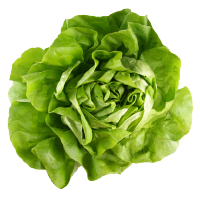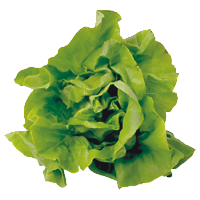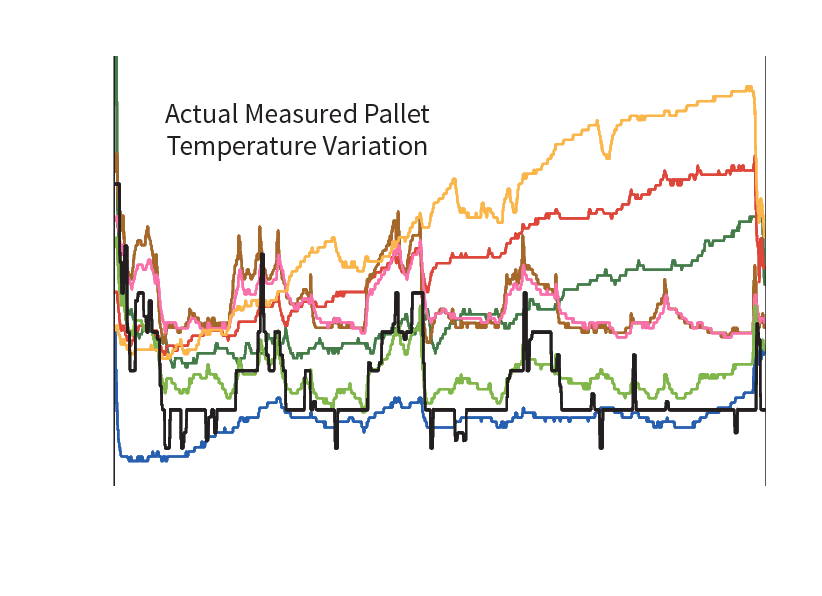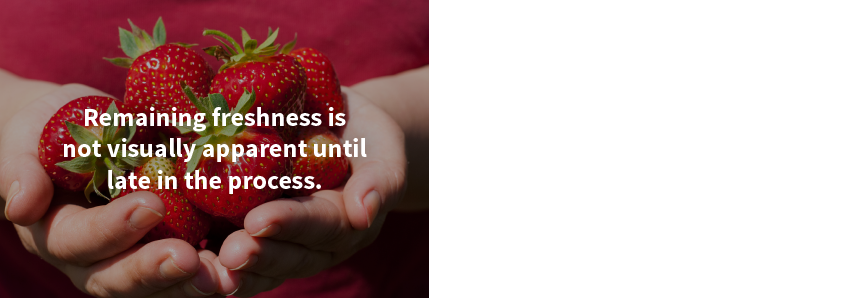FRESH PRODUCE
Consistency of delivered freshness a huge challenge.
Despite many advances in produce harvesting, processing and distribution techniques,
there still remains roughly 33% post-harvest waste*
between the farm, retailer and consumer.
Much of this waste is the result of misperceptions...
*UN FAO Global Food Losses and Food Waste
Perception
Reality
Impact
All produce harvested on the same day
will have the same shelf life.
Produce
shelf
life
can
vary
significantly
within
a
single
day's
harvest.
Cut-to-Cool
time
delays
directly
impact
shelf
life.










Cut Time:
7:00 AM @ 65°
Entered Pre-Cooler:
8:15 AM @ 68°
Cut Time:
9:30 AM @ 72°
Entered Pre-Cooler:
5:20 PM @ 83°
Cut Time:
2:30 PM @ 84°
Entered Pre-Cooler:
7:05 PM @ 88°
Your first harvest of the day is at cool morning
temperatures, and goes directly into pre-cool upon
arriving at the pack house. But as the day wears on,
pre-cooler capacity doesn't match the harvest rate, and
pallets back up. As cut-to-cool time grows, and
temperatures rise, product shelf life decreases. If the
reduced shelf life from extended cut-to-cool times is not
tracked, the risk of problems or rejection for deliveries to
distant retailers increases.
Perception
Reality
Impact
Produce pulp temperatures match pre-cooler air temperature when pallets are removed.
Produce
temperatures
can
vary
significantly
after
pre-cooling.
Insufficient
pre-cooling
significantly
reduces
shelf
life.





Pre-cooling is critical to extending shelf life, as it is the primary method of reducing the
respiration rate, which slows ripening or delays decay. Best-use-by dates assume complete
pre-cooling to the safest low temperature for each type of produce. However,
many products are insufficiently pre-cooled due to inaccurate and incomplete tracking of
product pallet temperature. Even small final pre-cool temperature differences can lead to
significant shelf life reduction.
Perception
Reality
Impact
It doesn't matter which pallet ships to the furthest destination because they all have the same remaining days of freshness.
Unaccounted
for
variations
in
remaining
days
of
freshness
can
dramatically
impact
delivered
freshness.
Indiscriminate
routing
results
in
inconsistent
delivered
freshness
and
unnecessary
waste.













Blindly selecting pallets with varying freshness for differing distribution requirements and
transit times leads to disappointment in delivered freshness. The longer the trip or post-delivery distribution needs, the higher the risk. Waste and customer disappointment increases
if you do not ensure the necessary freshness based on distribution time and customer needs
(i.e. retailer versus restaurant).
Perception
Reality
Impact
All produce is maintained at the ambient temperature of the trailer.
Significant
pallet-level
temperature
variations
can
occur
within
the
trailer.
In-transit
pallet
temperature
variations
increase
waste
and
risk
of
shipment
rejection.







Studies have shown, that even in, "…well-controlled conditions inside a chilled distribution
container, there were significant temperature variations from pallet to pallet of up to 35
percent."* Trailer level temperature monitoring exposes the supplier to full load rejections,
based on a few bad pallets, and the retailer to accepting bad pallets based on false
assumptions resulting in waste for the retailer.
*Intelligent Cold Chain - Deloitte
Perception
Reality
Impact
Visual inspection is a reliable way to estimate remaining freshness.
Visual
inspection
cannot
reliably
estimate
remaining
freshness.
Produce
is
distributed
that
does
not
meet
retail
freshness
requirements.




Extending shelf life through refrigeration has led to a disconnect between visual freshness
indicators and actual remaining freshness. Fresh picked fruit typically is fresh for 2-3 days.
Refrigeration has extended that to 14+ days, as the ripening or decay process has been
slowed. So visual indicators are lagging indicators, only apparent in the final few days of
remaining freshness, meaning they are only a good screen for consumers–not supply chain
receiving.
Perception
Reality
Impact
All produce received at retail is fresh,
with at least 5 days of remaining shelf life.





Produce
quality
can
vary
significantly
due
to
post-harvest
handling.
Store-level
quality
inconsistency
leads
to
dissatisfied
customers
and
waste.

Grocers maintain and display produce with care, as consumers choose retailers based on
their fresh produce. However, retailers are challenged with maintaining freshness as they
cannot "see" how the produce was previously handled, and the produce is only as fresh as it
was received – which can vary significantly. Without consistent delivered freshness, this
challenge becomes unmanageable, resulting in waste for both the retailer and the consumer.

